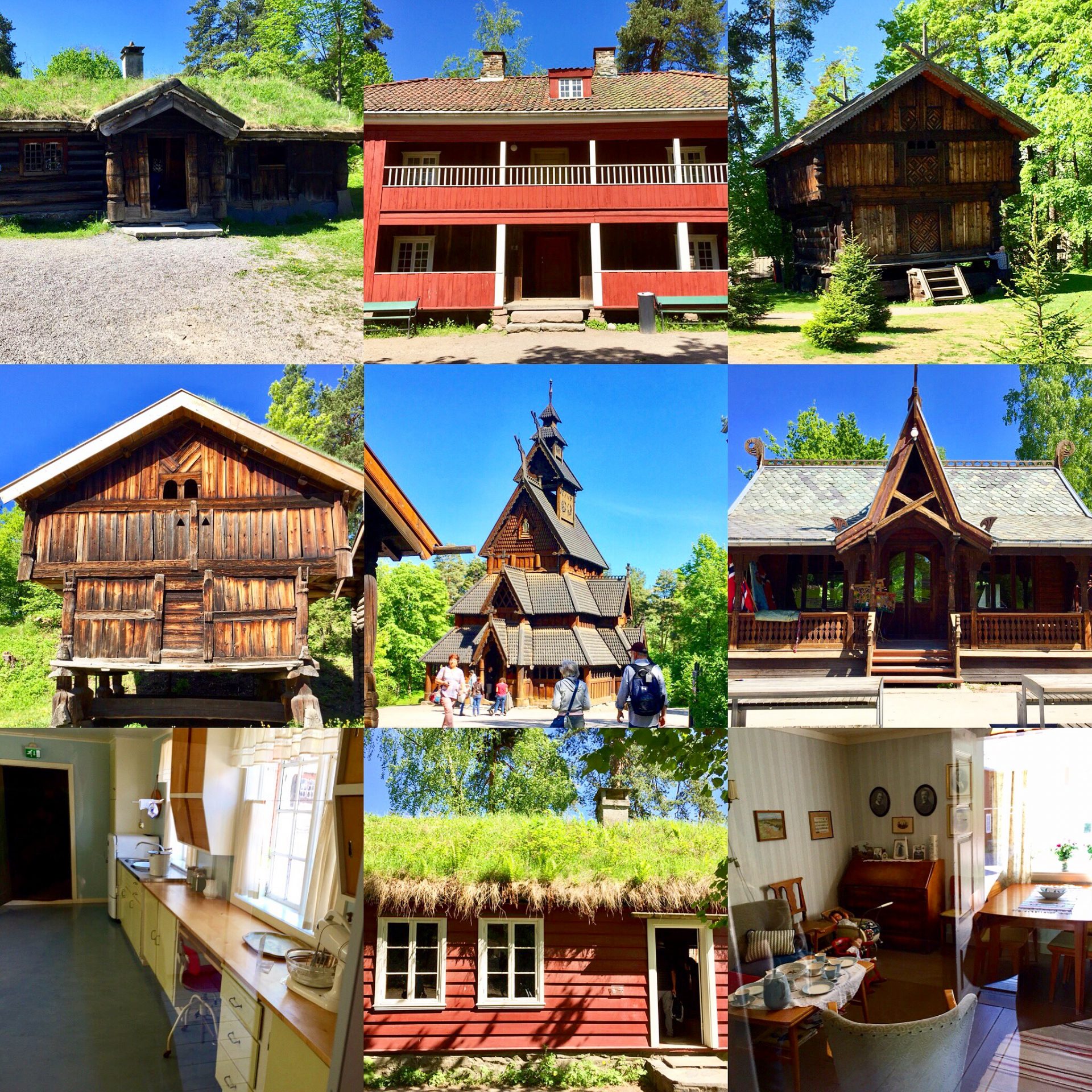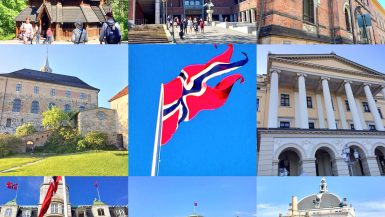
I woke up to a beautiful sunrise. Then again, it had been there all night. When they say Norway is the land of the midnight sun, they ain’t kidding. All night long, I kept staring outside my hotel room window just waiting for the sun to set; it seemed darkness would never come. Geographically, Oslo is roughly located on the same line of latitude as Anchorage, Alaska; since the summer solstice was about a month away, the days up there seemed to go on all day and almost all night. If you ever plan on visiting Norway or any place in Scandinavia during late spring or early summer, do bring a sleeping mask!
After a hearty breakfast, Jeanna and I headed out to the waterfront promenade near Rådhuset, Oslo’s City Hall. If there’s one thing that brings tourists to this city, it’s the seaport. Traveling by boat, even so much as a brief ferry ride through the harborfront, is definitely worth the flight over the North Atlantic. Our smooth sailing took us to the neighborhood of Bygdøy (pronounced big-day). Bygdøy is a peninsula situated on the western side of Oslo. Bygdøy is also the home of five national museums as well as a royal estate. Bygdøy is largely a residential zone but retaining a profile of upscale demographics. Bygdøy Royal Estate (Bygdøy kongsgård) is the official summer residence of the King of Norway, and Oscarshall, site of the Queen Josephine Gallery, are also located here.
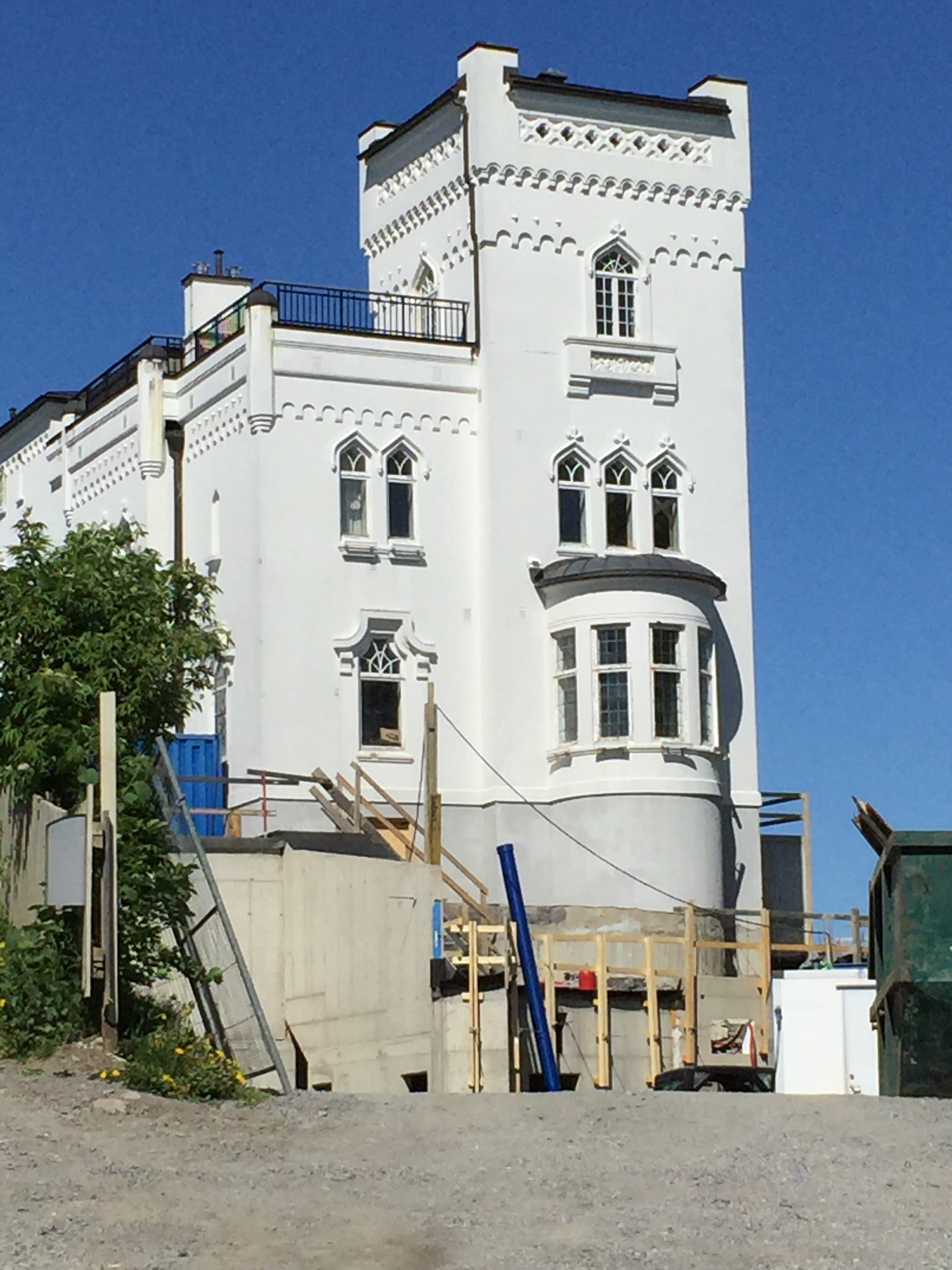
This is where one will find much of Oslo’s most visited attractions that celebrate its illustrious past from its viking heyday to the modern-day country we know today. First stop was the Vikingskipshuset (Oslo’s Viking Ship Museum). On the outside, it looked like a church in the middle of nice suburb. On the inside, however, it was a treasure trove of ancient artifacts from the bygone days when the vikings ruled the seas, plundered many kingdoms, and were known not just as feared warriors but as masterful mariners of the open ocean. After all, long before the age of exploration when Columbus and Magellan were the most well-known explorers, it was people like Eric the Red and Leif Erikson who got a jump start first with Newfoundland, Greenland, and parts of North America.
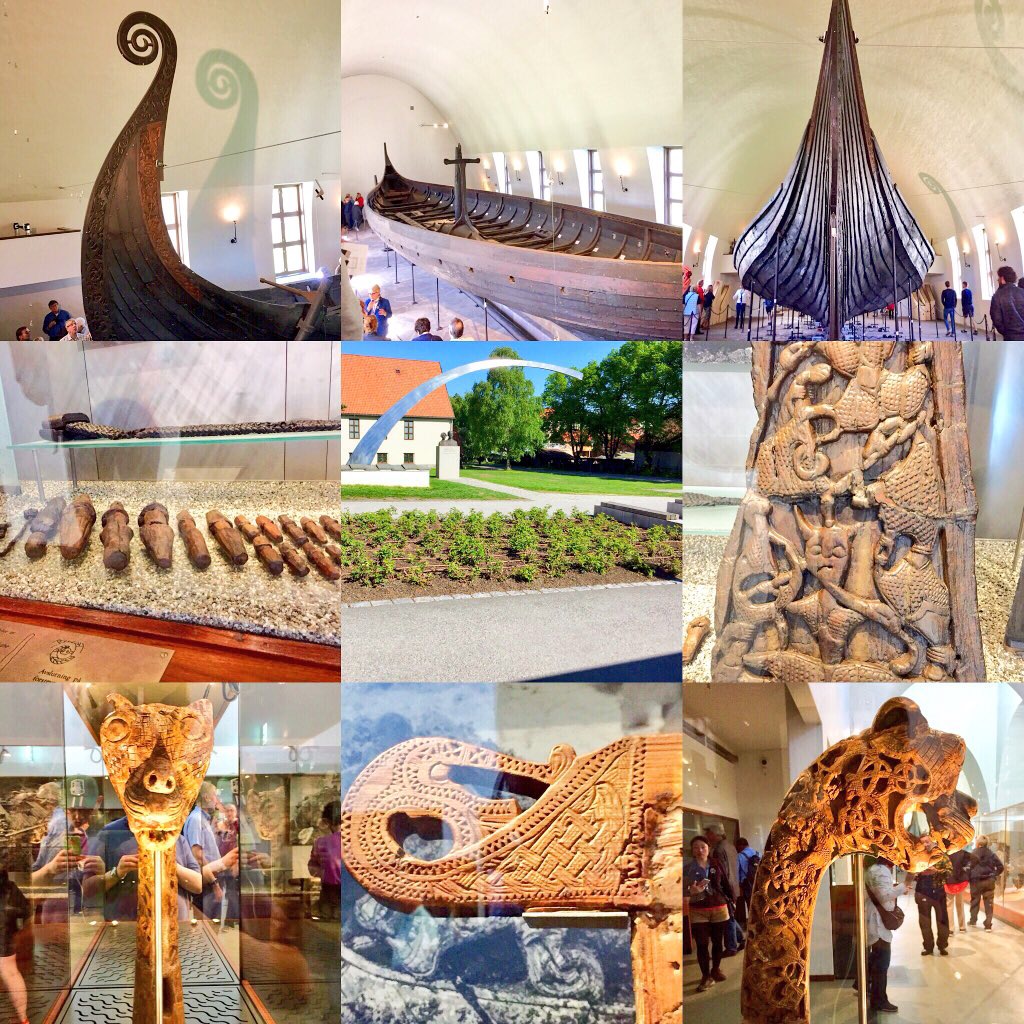
The museum is most famous for the completely whole Oseberg Ship which was excavated from the largest known ship burial in the world. The Viking Age display includes sledges, beds, a horse cart, wood carving, tent components, buckets and other grave goods. The Osebergship (Osebergskipet) is a well-preserved Viking ship discovered at the Oseberg farm near Vestvold county, Norway. This ship is commonly acknowledged to be among the finer artifacts to have survived from the Viking Era.

After reliving the Viking Era, our Norwegian heritage tour in Bygdøy continued at the nearby Folksmuseet. Norsk Folkemuseum (Norwegian Museum of Cultural History) is a museum of cultural history with extensive collections of artifacts from all social groups and all regions of the country. It also incorporates a large open-air ethnographic museum with more than 150 buildings, relocated from towns and rural districts. Norsk Folkemuseum was established in 1894; after having built temporary exhibition buildings and re-erected a number of rural buildings, the museum opened its gates to the public in 1901. In 1907, the collections of King Oscar II, on the neighboring site, was incorporated into the museum. Its five relocated buildings, with the Gol Stave Church in the centre, is recognized as the world’s first open-air museum, founded in 1881.

After a few hours of wandering through the enchanted forests and time traveling through Norway’s architectural history, we hopped a ferry back across the water to Oslo where we scavenged the waterfront area around Aker Brygge for a late lunch. It’s here we found a smorgasboard of food trucks putting their own twist on American classics. The only thing better than a sausage smothered in sweet potato fries and aioli is noshing on one with a view of Oslo’s waterfront on a sunny day.
After a quick nibble, I headed into the nearby Nobel Peace Center. Unlike the Nobel Prize which is awarded in Sweden, the birthplace of Alfred Nobel, Oslo is where its peace prize medal is given out. The Nobel Peace Center (Nobels Fredssenter) is a showcase for the aforementioned award and all the ideals it represents. The Center is also an arena where culture and politics merge to promote involvement, debate and reflection around topics such as war, peace and conflict resolution. The Nobel Peace Center was opened in 2005 by His Majesty King Harald V of Norway in a ceremony attended by the royal families of Norway and Sweden. The Nobel Peace Center is located in the former Oslo West railway station building. It overlooks Aker Brygge and Oslo City Hall where the Nobel Peace Prize Award Ceremony takes place every December 10th, to commemorate Alfred Nobel’s death.
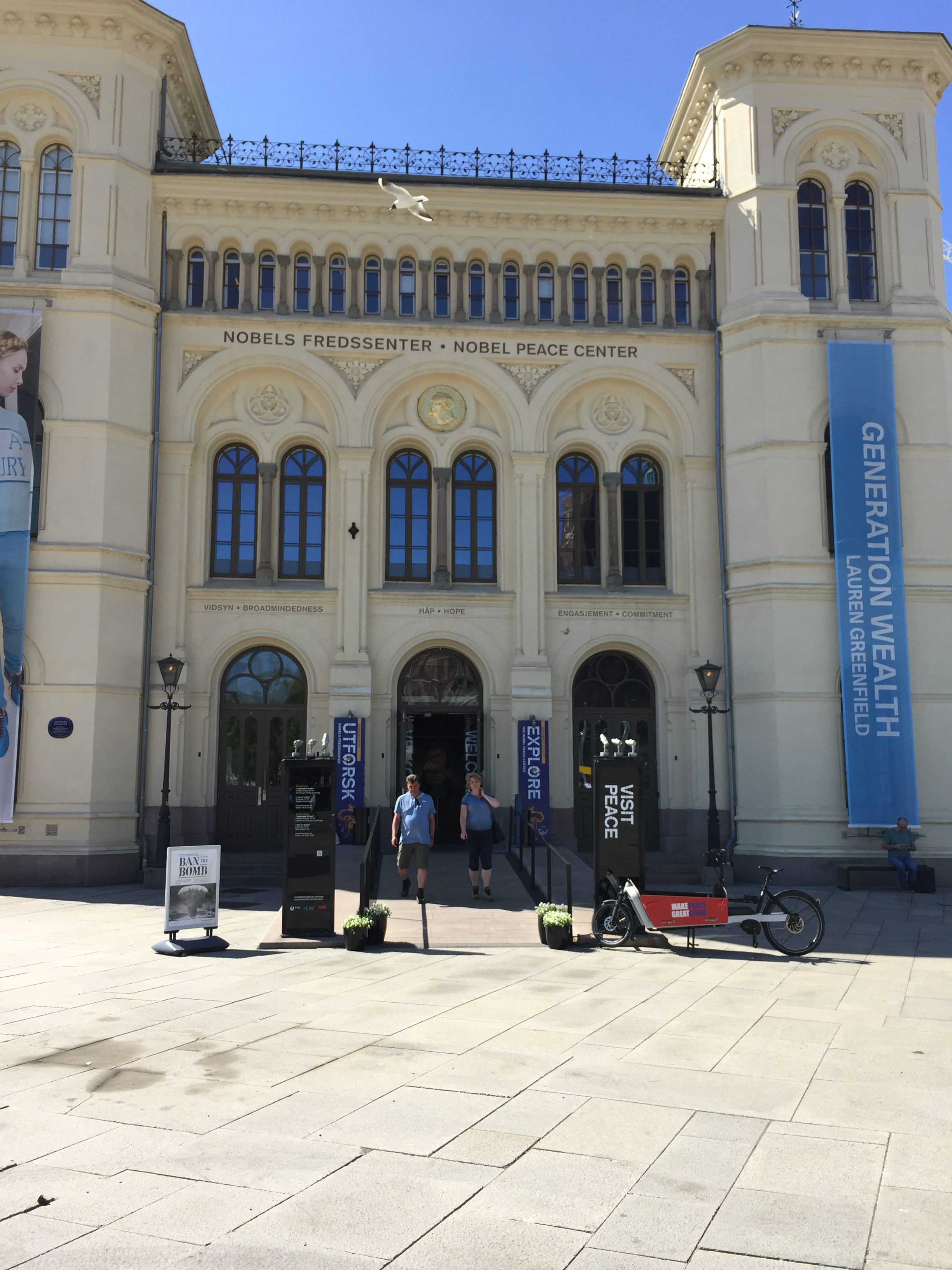
The museum is indeed a special place. It is a wall-to-wall hall of fame for all the great societal contributors of humanity. There are exhibits that pay tribute to each Nobel recipient, moments in War and Peace, revolutions throughout history that fought against oppression, and an interesting piece of the origins of the peace sign. Plus, if you look up at the walls, you can see stamped heads which are all past Nobel Peace Prize recipients.

